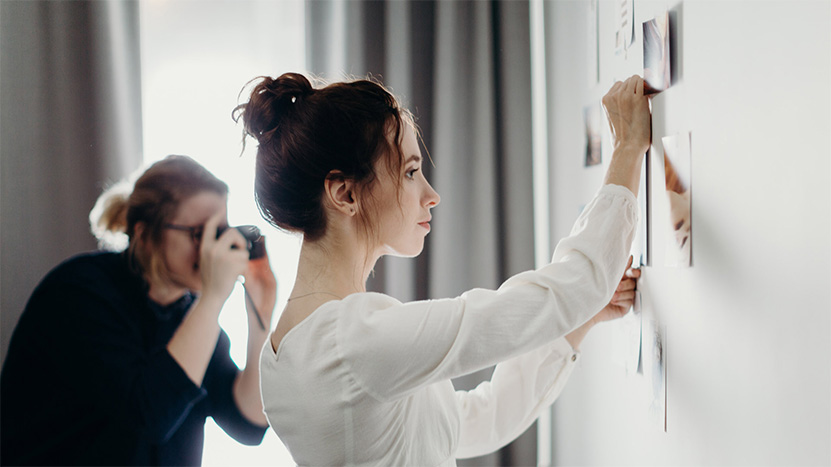Feeling frustrated? We’ll help you avoid some common moodboard pitfalls.
We published “How To Make a Moodboard” about a year ago, but it’s such a popular topic, we thought we’d revisit it—this time with some pointers on how to get inspired, and some moodboard pitfalls to avoid.
As we discussed, moodboards aren’t intended to be a definitive, final look or identity for your brand. They’re a starting point, meant to give your ideas some physical characteristics and make sure it’s communicating ONE visual mood—not many interpretations of the same mood.
When is it time to make a moodboard?
Once your brand’s messaging has been determined, you’re probably ready to get into visual identity. It’s a good place to start before you begin logo explorations, fonts, or other more tangible aspects of your visual identity. Your moodboard will help define what the whole brand looks like. Without this in place, you run the risk of haphazard or mismatched ideas (which will come back to haunt you later on).
Sometimes this can seem like a fluffy activity when you already have a logo in mind, you know your colors—maybe a couple of colors, and you have your font picked out. But similar to really pausing to spend time on your messaging, truly visualizing each element together will help you avoid annoying conflict further down the road. We’re going to go over some pointers and common moodboard pitfalls to help you along the way!
Pointers
Be fearless! This is a time to be creative behind the scenes, so nothing is off-limits. Do you have a logo you absolutely love? Here’s your chance to see what about it might fit into your brand image without worrying about copyright.
Think outside the box (the box is a Google Image search). Again, nothing is off-limits. Do you have a favorite Instagram account, an image on your phone, a famous photograph, a statue, an exhibit? Is there a person or place that evokes your brand’s message? No matter how disparate, any of these can serve as inspiration.
It’s not just color. The term “moodboard” might bring to mind carefully curated, monochromatic Pinterest boards. We get it—pink, pink, pink. This is also a place where you can play with something that can be overlooked: pattern. Some of the most famous brands in fashion make exquisite use of pattern—think of a brand like Burberry’s iconic check pattern. You don’t need any more visual information than that pattern to know exactly what you’re looking at (and they’re aiming to keep it that way).
Moodboard Pitfalls
Being overly detailed. Sure, you want to capture as much as you can—but this isn’t the final, definitive iteration of your brand’s image. True to its name, the moodboard is helping establish you brand’s mood—not its technical intricacies. That comes later.
Speaking of technical… this isn’t the stage where you want to take your brand platform and create a literal visual interpretation. Your goal is to try to capture “attributes”—things like “wise” or “graceful” as opposed to, say, a Caretaker avatar. This is an abstract process—what does “wise” look like? You can see how this is easily open to interpretation, which makes solidifying that image all the more important.
Limiting your scope. There are lots of tools out there (we mentioned some in the previous article) for creating moodboards, and they can be helpful tools—but recognize they have limitations. You can easily assemble something on a site like Canva or Pinterest, but to truly put it together, you may be best off enlisting the help of a professional. In the same vein, you want to be aware of your target market and competitors—but you don’t want to mimic them too closely.
Moodboards are an essential place to get creative juices flowing, but not at all a final product. They may even surprise you—when you begin to put your ideas together, It might not look like what you expect







